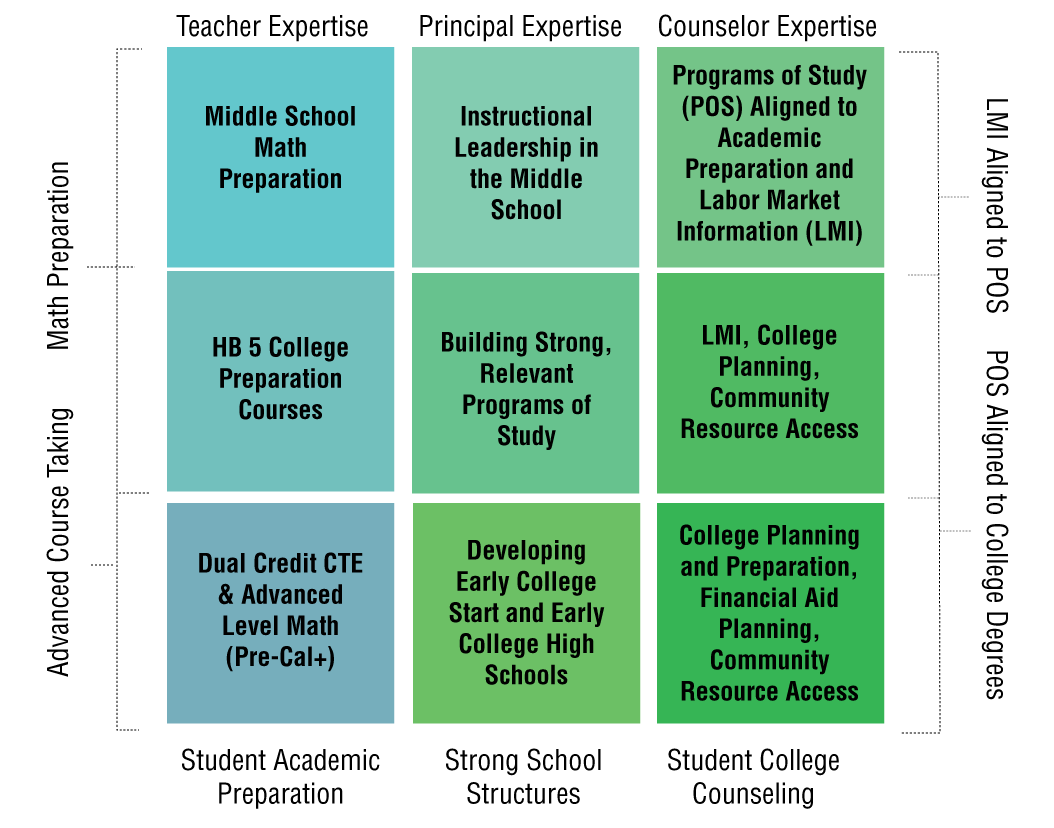|
|||||||||||
Texas Regional STEM Degree Accelerator Project Background Texas is projected to have approximately 9% of the nation’s future STEM opportunities, the second highest in the country.[iv] At the same time – according to research supported by the Houston Endowment and the Texas Higher Education Coordinating Board – the state’s rapidly changing demographic mix will pose challenges as Texas’s growing, economically disadvantaged, minority populations have less than a 10% postsecondary completion rate.[v] Therefore, the urgency to identify policy and programmatic strategies to meet this need is critical. Local and state institutions play an integral role in developing solutions to help accelerate the number of our students who will graduate with postsecondary STEM credentials. Overview Use real-time labor market data to identify regional STEM workforce needs. Collaboratively develop strategic plans that use research-based practices that are known to support and increase student performance in STEM academic and career pathways. Increase the number of underrepresented students in each region who graduate with postsecondary STEM credentials (including two-year, four-year, or technical degrees and/or workforce certificates) that meet identified workforce needs. To expand the number of students with STEM credentials, institutions of higher educations and their partners must work together to analyze data, introduce interventions that improve curricula, and provide support for students. This project is designed to facilitate data-informed decision making that results in the use of existing practices based in research and evidence. Planning Grants were approved for regional teams to begin in spring 2015 and approximately 4-6 of these teams will be selected to begin implementation in fall 2015. Each of the following teams includes partners representing all levels of education (K-12, two-year, four-year) and workforce (investment boards and employers).
The Texas Regional STEM Degree is funded through the generosity of The Leona M. and Harry B. Helmsley Charitable Trust, The W.W. Caruth, Jr. Foundation, The Kresge Foundation, and Greater Texas Foundation and is developed in alignment with priorities for education and workforce outlined by the Texas Higher Education Coordinating Board and the Texas Workforce Commission. Update provided by Kelty Garbee, Association Program Officer, Educate Texas. Rothwell, J. (2013). The Hidden STEM Economy. Washington, DC: Brookings Institution. http://www.brookings.edu/research/reports/2013/06/10-stem-economy-rothwell Carnevale, A.P., Smith, N. & Strohl, J. (2010). Help Wanted. Projections of Jobs and Education Requirements Through 2018. Washington, DC: Georgetwon University Center on Education and the Workforce. http://cew.georgetown.edu/jobs2018 Schleicher, A. (2012). Education At a Glance: OECD Indicators 2012. National Center for Higher Education Management Systems (2012). A new measure of educational success in Texas. Retrieved from http://www.houstonendowment.org/Assets/PublicWebsite/Documents/News/measureofsuccess.pdf The Texas Tribune (2014). Higher Ed Outcomes. Austin, TX: The Texas Tribune
|
|||||||||||



